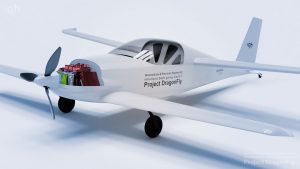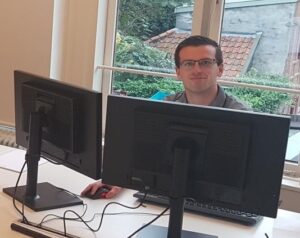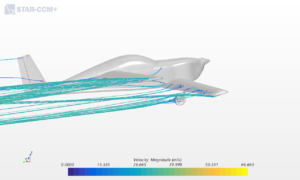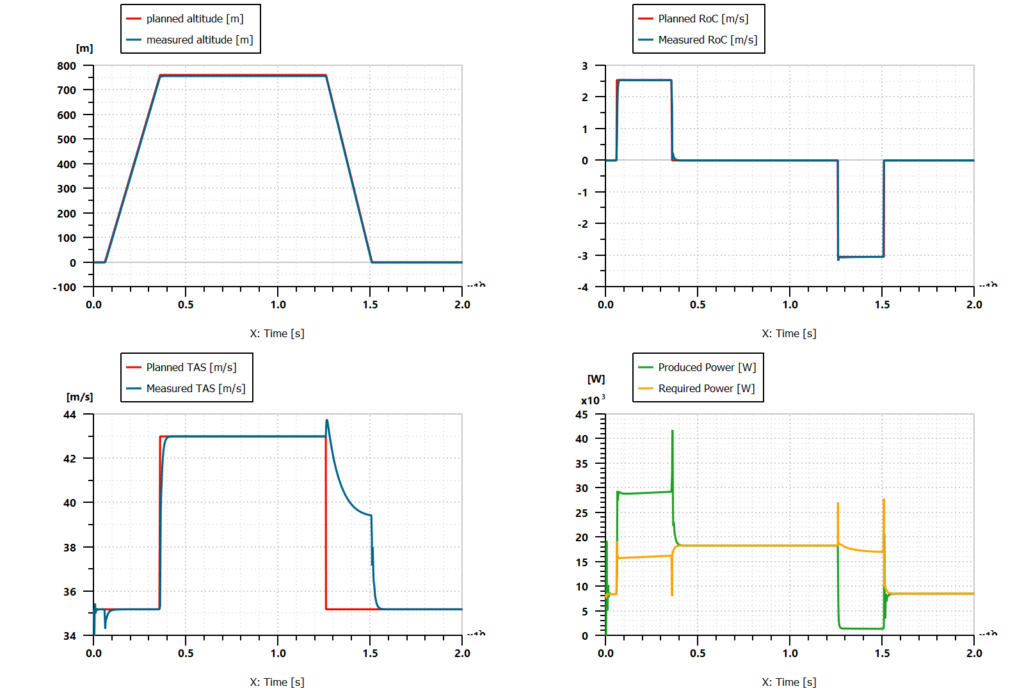How Amesim Software is helping Project Dragonfly take off
Learn more about the experience of our project DragonFly intern Jordi with our new systems simulation software: Simcenter Amesim.
Learn more about the experience of our project DragonFly intern Jordi with our new systems simulation software: Simcenter Amesim.
 Project DragonFly is an applied research project of the research lab at Inholland University of Applied Sciences in Delft, the Netherlands. Their goal is to convert a small aircraft into an electrically propelled, battery-powered aircraft, to show that the existing technology for battery-electric-vehicles is capable of powering small aircraft. For such a conversion, many factors play a role. Ideally you want as much power, with as low a mass as possible and as much lift as possible, with little drag.
Project DragonFly is an applied research project of the research lab at Inholland University of Applied Sciences in Delft, the Netherlands. Their goal is to convert a small aircraft into an electrically propelled, battery-powered aircraft, to show that the existing technology for battery-electric-vehicles is capable of powering small aircraft. For such a conversion, many factors play a role. Ideally you want as much power, with as low a mass as possible and as much lift as possible, with little drag.  The final design should be a balance between these, and many more, factors. The goal of my assignment was to set up a virtual model in Simcenter Amesim that can show the impact of individual components in the electric aircraft on the flight performance of the aircraft overall. My study focused on the aerodynamic side of this model, while another Femto intern; James Riady, would focus on the motor.
The final design should be a balance between these, and many more, factors. The goal of my assignment was to set up a virtual model in Simcenter Amesim that can show the impact of individual components in the electric aircraft on the flight performance of the aircraft overall. My study focused on the aerodynamic side of this model, while another Femto intern; James Riady, would focus on the motor.
The main takeaway from my study is that Simcenter Amesim is a valuable tool in the design process for these types of projects. The system simulation software can be used to quickly test and explore different design concepts with the corresponding flight performance.
Siemens Digital Industries Software provided the DragonFly team with access to their Simcenter Portfolio. Simcenter Amesim provides a method for simulating a system by simulating each component in it. By separating the entire aircraft inside the simulation into batteries, electromotors, propeller and many more components, the influence of each component on the entire system can be shown. Simcenter Amesim allowes multiple fields of physics (e.g. electronics, thermodynamics & aerodynamics) to work together to simulate an entire aircraft.

I also used CFD software, Simcenter STAR-CCM+, to provide the system simulation with detailed aircraft aerodynamics input.
Simcenter STAR-CCM+ allowed me to set up a simulation, and then automatically run this simulation with various input parameters using its Design Manager. This way, I was able to calculate the aerodynamics of the aircraft as functions of these parameters (for example pitch angle or the velocity of the aircraft). These functions, resulting from the STAR-CCM+ simulation, were used as Amesim input, so that the aerodynamics in the system simulation reflect the aerodynamics of the aircraft at each different flight condition.
System simulations allows to visualize the influence of each component on the overall system. This makes is a great tool for engineers, who can optimize their designs using these simulations. With the current Project DragonFly model we could, for example, test their battery and motor setup in a different aircraft and compare the performance with the original very efficiently. All it takes is importing the new aircraft into STAR-CCM+, run the CFD simulations again and import the results back into Simcenter Amesim. Within 24 hours, a new design can be evaluated, this is hugely beneficial since most projects face some time and budgetary restraints.

While searching for CFD related assignments, I came across Femto. Femto describes itself as a group of friendly hard-working engineers, which felt for me like a good fit. Working at Femto was a pleasant experience. Everyone at Femto is friendly, knowledgeable, and ready to help when needed. They gave me a lot of freedom and responsibility in how to execute my assignment.
For me the most interesting part of being an engineer is bridging theory and practice. An engineer needs to be able to apply theory. I have always been interested in technical subjects and figuring out how things work. And for advice: work hard and don’t give up. If you put the effort in and show people what you can do, you will be able to achieve your goals.
After obtaining my bachelor’s degree I would like to continue working with simulation software. In the meantime, I’ll work parttime at Femto on system simulation assignments. Maybe I can you tell you more about these in a future post.
We love working with enthusiastic engineering students and give them the opportunity to work with our simulation specialists and tools. If you are interested in one of our tools, projects or in an interning position do not hesitate to contact us. Every year we have limited positions available.
If you like more content like this, do follow us on our social media channels: LinkedIn, Twitter or Youtube! Here are some posts that might interest you.
Spotlight on an intern: CFD
Spotlight on an intern: FEM
What is ID system simulation?
Do you need more information or want to discuss your project? Reach out to us anytime and we’ll happily answer your questions.
At Femto Engineering we help companies achieve their innovation ambitions with engineering consultancy, software, and R&D.
We are Siemens DISW Expert Partner for Simcenter Femap, Simcenter 3D, Simcenter Amesim, Simcenter STAR-CCM+ and SDC verifier. Get in touch and let us make CAE work for you.
Sign up for our newsletter to get free resources, news and updates monthly in your inbox. Share in our expertise!